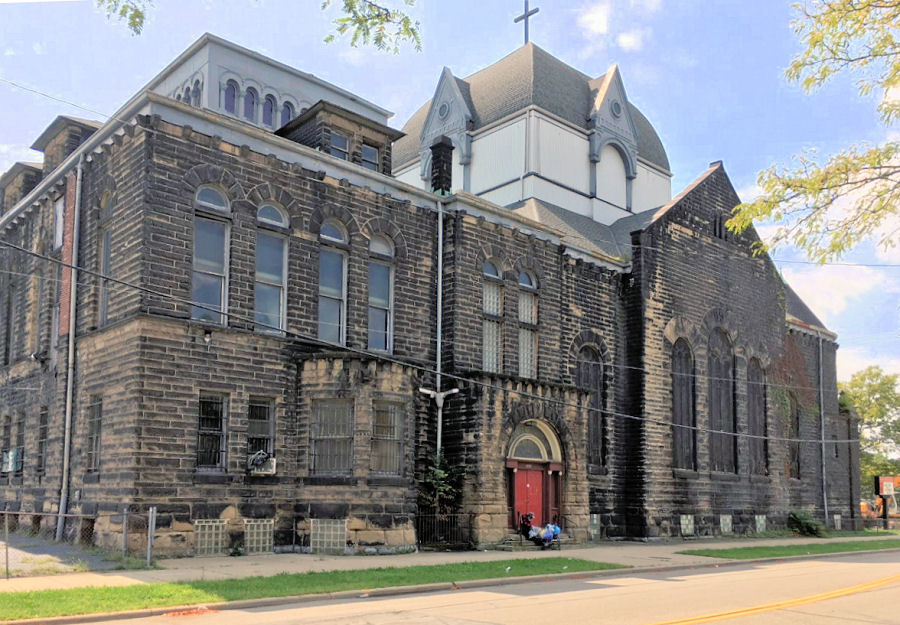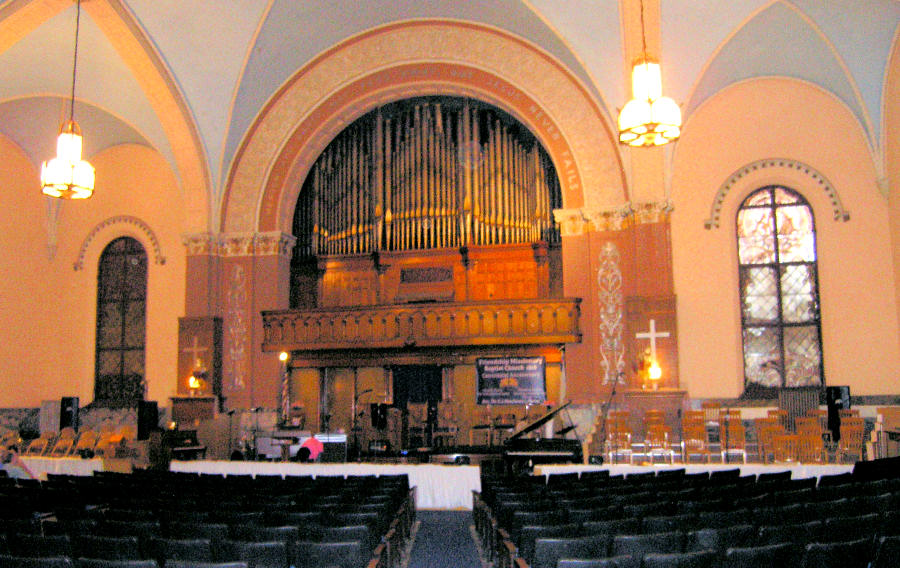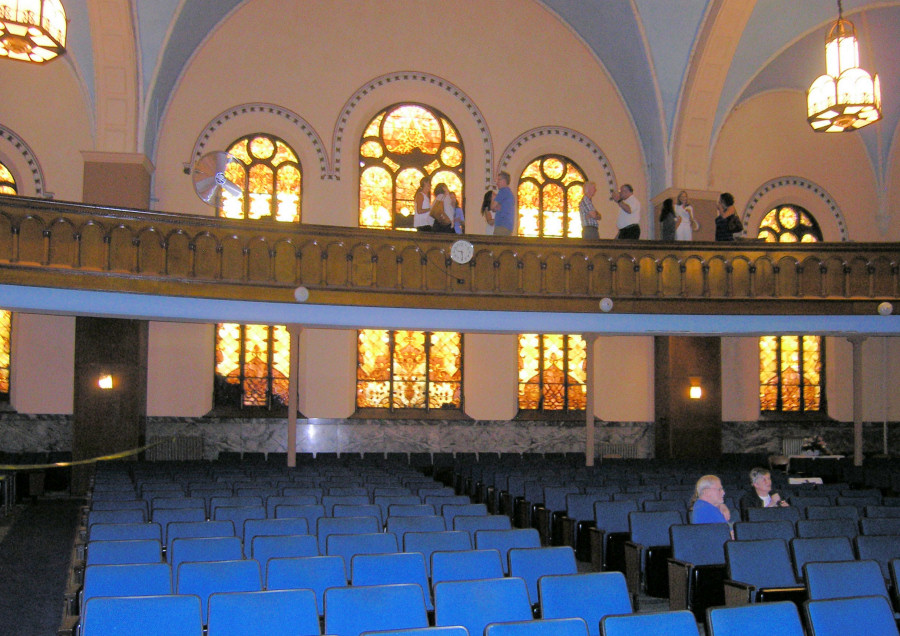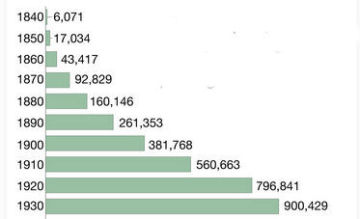|
|
Willson Avenue Temple (Tifereth Israel) 1894 - 1924 |
| Introduction In use since 1894, The Temple on East 55th Street and Central Avenue (originally known as The Willson Avenue Temple) is our oldest still-standing Cleveland synagogue building. Never having been in the building I asked its owner, Friendship Baptist Church, to let me know when it would be open for a visit. They called a few days ago and invited me to visit this morning before services. They were welcoming a family reunion group -- the Rabbi Moses Gries and Frances Hays Gries Family Reunion. Some members of the group can be seen in my photos of the sanctuary. As I was leaving, church members, men and women of all ages, began to arrive for the morning service. I sensed energy, fellowship and devotion in this building that once had been the spiritual home of more than a thousand Jewish families. Arnie Berger Sunday September 2, 2018 |
|
In 1850 Tifereth Israel (Glory Unto Israel), Cleveland's second-oldest congregation, built its first home on Huron Road and Miami (now East 6th) Street downtown. It was known as the Huron Road Temple. In 1861 they expanded the building. The congregation, with more than 100 member families, most having moved east of downtown, built a much larger building on Central Avenue and East 55th (before 1907 named Willson Avenue). It was dedicated in September 1894. The architect, Israel Lehman, a member of the congregation, had already designed a synagogue for Anshe Chesed in 1887 (Scovill Avenue Temple) and would in 1912 design another for Anshe Chesed (the Euclid Avenue Temple.) For a while newspapers called the congregation "the Willson Avenue Temple", though soon they would refer to it as "The Temple," the congregation's English name. Moses Gries, named rabbi of Tifereth
Israel in 1892, officiated here. Only 10 years after the move to
this building he told the congregation that it was time to move to a
new building. (More
on this below.) Gries resigned in 1917 and was followed by
Rabbi Abba Hillel Silver. |
| Below: The exterior: from an old picture postcard | |
|
Looking southeast. The streetcar is headed north on Willson
Avenue, renamed East 55th Street in 1906. |
The eastern building,
5600 Central Avenue, held the classrooms, offices and a large
library. East 55th would become a street with many Jewish institutions, including B'nai Jeshurun Congregation, which also stands. One of the new apartment buildings in the neighborhood can be seen in the lower left corner of the postcard. |
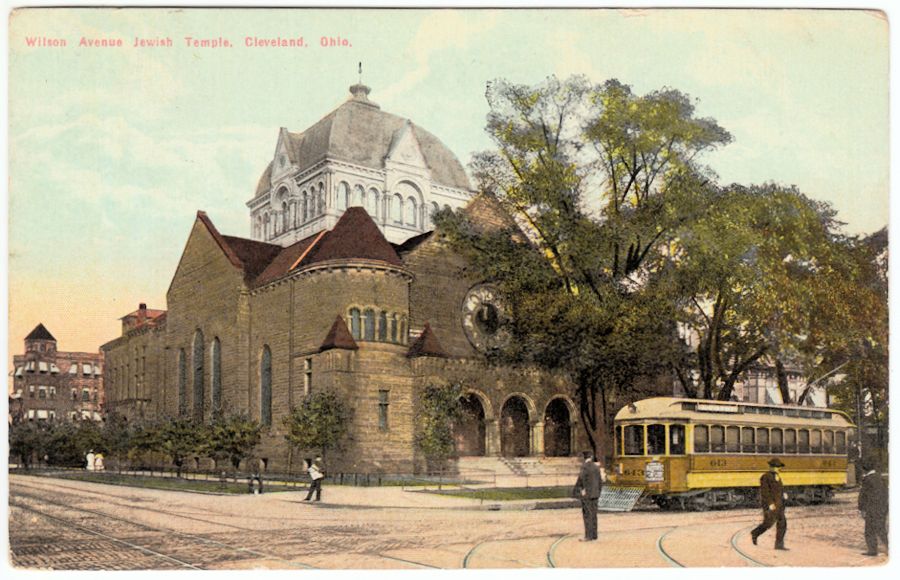 |
|
|
|
|
|
|
|
| It is the last building standing on Central Avenue between East 55th and East 58th streets. Once home to upscale apartment buildings, the street is now barren. A man with a large bag that may hold his clothes sits at the front door. That red door, with its address 5600 Central, led to offices, to classrooms for one of the nation's largest Sunday schools, and to a library said to be one of the largest congregational libraries. | |
|
Below: The front of the sanctuary (taken 9/03/18 by A Berger) |
|
|
This organ may have been new, but it was not the congregation's first. It had installed one in 1861 when the Huron Road Temple was remodeled. The individual seats on the lower level could hold 800 persons. The balconies would seat 200 more. The congregation faced south. Reform rabbis would say there is no imperative to face east when praying; God is everywhere. Further, our Jewish bible includes examples of praising the Lord with music and song and does not require men to cover their heads when praying. |
|
|
|
|
|
Below: The rear of the sanctuary (taken 9/03/18 by A Berger) |
|
|
The balcony runs along the northern and western walls of the sanctuary. Who sat in the balcony? Anyone. The Temple had adopted mixed (family) seating in 1861. Many seats in the lower level were "owned" by members. The sale of seats was a practice that allowed many congregations to erect new buildings without mortgages. |
|
|
|
|
|
The Plain Dealer praises the "New Jewish Temple" |
||
| A story that ran on the front page of the Plain Dealer of
Saturday, September 22, 1894 and continued on the second
page began "SPLENDID" and contained the highest
praise. The main speakers were:
|
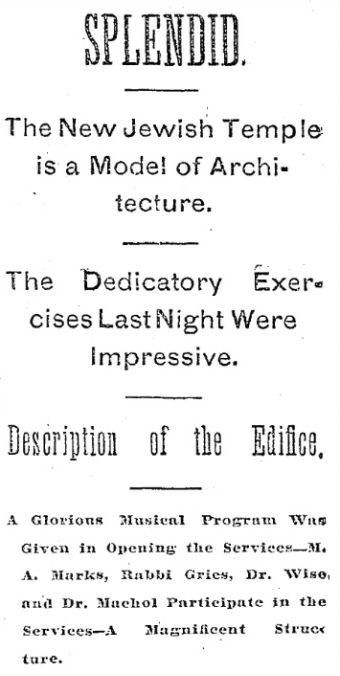 |
|
|
Read the Plain
Dealer story
page 1 (pdf)
page 2 (pdf) |
||
|
|
